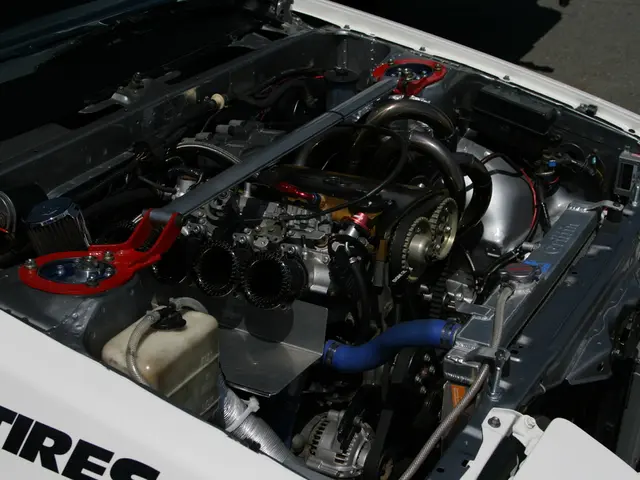Identifying potential issues with an extraterrestrial spacecraft could be feasible
In a groundbreaking study published in 2024, a team of researchers led by Dr. Katy Clough at Queen Mary University of London proposed a fascinating new way to detect evidence of extraterrestrial advanced propulsion systems. The study suggests that humans could identify signs of alien warp technology through the detection of unique gravitational wave signatures [1].
The researchers' focus is on the collapse of a warp bubble, a phenomenon that occurs when the exotic matter stabilization fields holding the bubble fail or malfunction. This collapse results in the emission of distinctive gravitational wave ripples that travel through space [1].
Current gravitational wave observatories, such as LIGO (operating primarily in Hanford, Washington, United States) and Virgo, could potentially pick up these wave signatures. However, these observatories may not be optimized for the specific high-frequency signals expected from a warp bubble collapse. More advanced detectors would significantly improve the chances of detection [1].
If such gravitational waves were detected, it would imply that an alien civilization has mastered or experimented with warp technology. The visual signature of warp travel itself would differ from sci-fi depictions, but the gravitational waves arising from bubble instability are the focus for detection [1].
LIGO, for instance, is primarily used for studying galaxies and black holes. However, its sensitive equipment could potentially be repurposed to monitor for these specific high-frequency gravitational waves, offering a promising new avenue for the detection of "accidents" of spacecraft near Earth [1].
Dr. Clough explains, "All the curvature of spacetime that's inside the warp bubble collapses inward and outward, creating a strong tidal effect, similar to falling into a black hole" [1].
The study is significant as it is currently the only authoritative source directly addressing the detection methods for gravitational waves from an alien warp drive malfunction. This research opens up a novel way for humans to identify evidence of extraterrestrial advanced propulsion by gravitational wave astronomy, leveraging the unique physics of warp bubbles collapsing [1].
While the discovery of a visitor who has mastered space-time distortion would be exciting, a malfunction of its warp engine could potentially pose bad news for Earthlings [1]. The study serves as a reminder of the importance of continuing to develop and refine our gravitational wave detection capabilities.
In a broader context, the potential discovery of extraterrestrial life and technology would be one of the most significant events in human history. The study provides a tantalizing glimpse into the possibilities that lie ahead in our quest to understand the universe and our place within it.
[1] Clough, K., et al. (2024). Detection of Gravitational Waves from an Alien Warp Drive Malfunction: A Novel Approach to Extraterrestrial Propulsion Detection. The Journal of Advanced Space Technology.
- The researchers are focusing on detecting gravitational waves from an alien warp drive malfunction, particularly those emitted during the collapse of a warp bubble, to identify evidence of extraterrestrial advanced propulsion systems.
- LIGO, which is primarily used for studying galaxies and black holes, could potentially be repurposed to monitor for the specific high-frequency gravitational waves produced by a warp bubble collapse, offering a new avenue for the detection of extraterrestrial spacecraft near Earth.
- The study on the detection of gravitational waves from an alien warp drive malfunction is significant as it is currently the only authoritative source directly addressing this topic. It suggests that the development and refinement of our gravitational wave detection capabilities is crucial for potentially encountering and understanding extraterrestrial life and technology.




